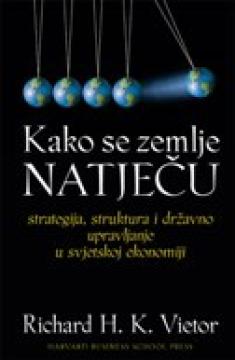
Kako se zemlje natječu: Strategija, struktura i državno upravljanje u globalnoj ekonomiji
As countries race to compete in an increasingly globalized arena, state strategies are more important than ever.
Countries around the world are competing more fiercely for the markets, technologies, skills, foreign investment, and distribution channels needed to grow their economies and raise living standards. In our fully globalized world, the specific strategies of these national governments will either succeed—or fail—in their efforts to stimulate and sustain growth, reduce poverty, adapt to urbanization, and create jobs.
In How Countries Compete: Strategy, Structure, and Government in the Global Economy, Richard H. K. Vietor shows how states set the direction and create the climate for national economic development and profitable private enterprise. Vietor argues that in today’s hypercompetitive environment, states consistently provide the specific advantages that firms need to compete on equal terms with their competitors. These advantages include high savings and low interest rates for investment, strong property rights and good government, a technologically motivated and committed workforce, low inflation, and a rapidly growing domestic market.
Presenting historical context, economic analysis and interviews with CEOs and civil servants around the world, Vietor offers a vivid and insightful analysis of the different approaches to government strategies that lead to both success and failure. Chapters describe important countries—China, India, Japan, Singapore, and the United States, as well as Mexico, Russia, Saudi Arabia, South Africa, and Italy—and reveal the unique social, economic, cultural, and historical forces that have shaped the country's development trajectory. Vietor also challenges the widely held view that in market economies such as the United States, strong state influence can only hinder business success.
Provocative in presentation and rich in sources, How Countries Compete offers a powerful insight into the developments in the business environments of important nations - both past and future.
No copies available
The last copy was sold recently.





